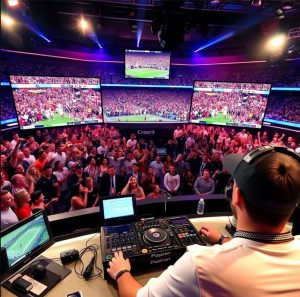 Music plays an essential role in a sports broadcast, creating a soundtrack that amplifies the energy and emotion of live events. From the opening anthem to the final whistle, music is used strategically to enhance the viewer’s experience. It helps bring fans closer to the action, making the game more immersive and engaging.
Music plays an essential role in a sports broadcast, creating a soundtrack that amplifies the energy and emotion of live events. From the opening anthem to the final whistle, music is used strategically to enhance the viewer’s experience. It helps bring fans closer to the action, making the game more immersive and engaging.
Setting the Stage with Music
The first note of music in a sports broadcast sets the tone for what’s to come. Broadcasters choose high-energy tracks to get fans excited before the game even starts. These familiar tunes build anticipation and create an atmosphere of celebration. Music also helps define the identity of the broadcast. Major sports leagues like the NFL and NBA have their iconic theme songs that instantly signal the start of something big. These tracks are carefully selected to match the pace, intensity, and spirit of the sport they represent.
Beyond the intros, music continues to flow throughout the broadcast, keeping the energy alive during breaks or when transitioning between highlights. It ensures that viewers remain engaged, even when the game is in a slower phase or during halftime.
Enhancing Emotional Moments
One of the most impactful uses of music in sports broadcasting is its ability to heighten emotions. Whether it’s a triumphant victory or a heart-wrenching defeat, the right soundtrack can intensify the viewer’s emotional response. During critical moments, such as a last-second score or a decisive play, music ramps up the drama. This connection between music and emotion is why some of the most memorable moments in sports are tied to the songs that accompanied them.
Sports broadcasters also use music to highlight personal stories, such as athletes overcoming challenges or celebrating career milestones. These moments are often paired with inspirational tracks that help narrate the journey, making the connection between the athlete and the audience more personal and relatable.
Music and Technology in Modern Sports Broadcasts
As sports broadcasting evolves with technology, so does the use of music. Digital platforms and streaming services have opened new avenues for incorporating music into broadcasts. Broadcasters can now personalize music choices based on the event, audience, or even geographic location. This makes the viewing experience more interactive and tailored to individual preferences.
Moreover, collaborations between sports broadcasters and the music industry are on the rise. Artists often perform live at major sports events, such as the Super Bowl halftime show or during NBA All-Star games. These collaborations help to merge the worlds of music and sports, creating a memorable experience for fans both on and off the field.
